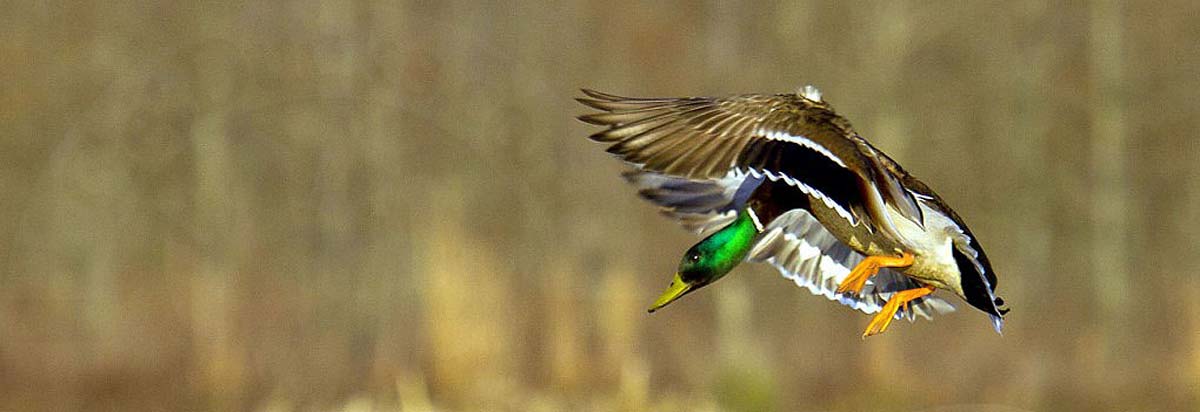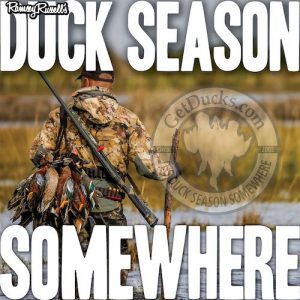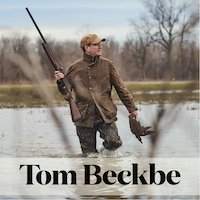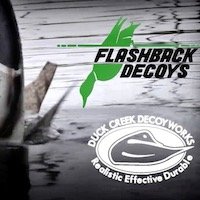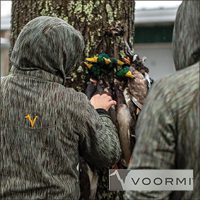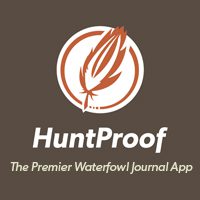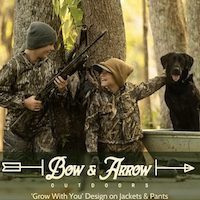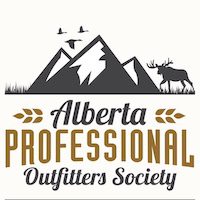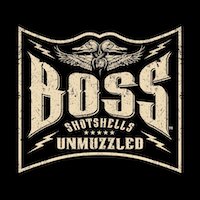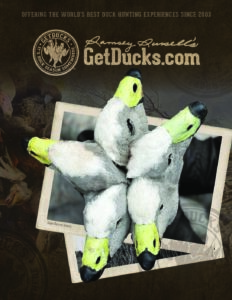Regarded by many as the absolute go-to guy when it comes to empirically describing North America’s duck populations, Dr. Todd Arnold is at University of Minnesota, where his research emphasis includes developing waterfowl population models to guide management activities and predict future populations. “Are we killing too many ducks?” I asked repeatedly throughout our conversation. His thoughtful, plainly worded answers provide greater understanding of Adaptive Harvest Management—its inputs, assumptions, strengths, weaknesses—leading us to in-depth discussions about our beloved mallards and pintails, and whether science-based, hunting-related harvest affects sustainable duck populations.
Waterfowl Hunting FAQs
Ramsey Russell: Welcome back to MOJO’s Duck Season Somewhere podcast, where today I’m asking the questions, are we killing too many ducks? Does harvest matter? Does regulated duck harvest matter? How are our waterfowl populations managed? I got to kicking around on the Internet doing some soil searching the other night and I stumbled across something I want to share with you. It was in a paper written by federal agent Dave Hall in 1987 and he quoted somebody from 1937 and it blew my mind, you all listen to this, sportsmen discussed the disappearance of waterfowl as they did 16, 20 years ago, blaming everything and everybody but themselves. Ducks, they say are killed by drainage, drought, botulism, alkali, oil pollution, crows, seagulls, foxes, Indians, Mexicans and muskrats, but is ever a word said about the deadly barrage of shotguns, a 3000 miles gauntlet of shot and shells ablaze from September to Christmas along every lake and stream from Canada to the Gulf of Mexico not Syllable that conversation is taboo. The loss of habitat is unquestionably the most critical issue, but not the only one scientific investigations of duck hunting mortality, especially illegal kill are lacking. That in the Apple said in 1987, 1937, I would tell the man that wrote that passage in 1937 that he doesn’t have Instagram, he hadn’t been on Facebook, he hadn’t seen the conversations, heard the podcast, buddy, let me tell you what a lot of folks, especially in the deep south are questioning the take of ducks and how it might be affecting the populations. I’m not smart enough to answer those questions, I’m not even smart enough to have an opinion. But today’s guest, Mr. Todd Arnold from the University of Minnesota, certainly does. Todd, how are you?
Todd Arnold: I’m great.
Ramsey Russell: Thank you for joining us today. I’m very excited about this conversation. Todd, could you introduce yourself? Who are you? What do you do?
Todd Arnold: Right now, I’m a professor at the University of Minnesota, it’s a place I’ve been for 20 years, I teach undergraduates fisheries and wildlife program, I teach courses about population analysis, I have graduate students who mostly work on waterfowl. I grew up in Minnesota and so I’m coming back to home here, but I’ve done a lot of different things as part of going to school and in my professional career. I was a graduate student in Missouri, I was a graduate student in Ontario and in Saskatchewan, I worked for Ducks Unlimited in Manitoba, I worked for Delta Waterfowl in Manitoba. And yeah, so I’ve done a lot of different things.
Ramsey Russell: I know that your emphasis, your research emphasis had to do a lot with a waterfowl ecology and management, but you also are very familiar with population modeling. Is that a fair statement?
Todd Arnold: That’s a fair statement. I’m really interested in population modeling.
Ramsey Russell: But you don’t work directly. You are not employed with any federal or state agencies that are implementing any of these management practices that we’re using on waterfowl?
Todd Arnold: No, I don’t and I like to think that that gives me the freedom to say whatever I want to and I usually do.
Ramsey Russell: But as I understand it now, you’re being very humble, Todd, because I have heard your name and examples of things you’ve said and written and published and coast to coast, Canada to the Gulf Coast, Atlantic to Pacific Flyways and all points in between, every time we get in a discussion along population and harvest and things of that nature, whomever I’m talking to mentions your name as an expert in this topic. And I just wanted to spell that out, that as humble as you are, you tend to have a tremendous amount of professional respect in the world of waterfowl ecology and management, especially in the world of population modeling. And I’ve heard said that even though you don’t work with the state and federal agencies with directly with them, that they do rely on a lot of your input, at least the flyway level. Is that correct? You do have some involvement in this process.
Population Models for Waterfowl
Todd Arnold: That’s true. And I’m working now with the Mississippi Flyway, I put on a workshop for state biologists and managers to help analyze, banding data and some of the sort of complicated population models that we do for waterfowl to help them better understand how to do that themselves.
Ramsey Russell: And I’m going to circle back, because for all you are in the world of waterfowl management, you are a duck hunter.
Todd Arnold: I am a duck hunter, yes.
Ramsey Russell: Did you grow up duck hunting in Minnesota?
Todd Arnold: I grew up duck hunting in Minnesota and that’s not a very good place to grow up to be an avid duck hunter. And so I really got into duck hunting when I was a graduate student in Ontario and long point on Lake Erie.
Ramsey Russell: Wow.
Todd Arnold: That’s where I became a duck hunter.
Ramsey Russell: So you’ve shot a few divers in your day?
Todd Arnold: I’ve shot a few divers in my day and setting up a big spread on open water is one of my favorite kinds of hunting.
Ramsey Russell: Mine, too.
Todd Arnold: Till the end of the day when I’ve got to pick all the decoys up, but until then.
Ramsey Russell: What led you into this field?
Todd Arnold: To be honest I –
Ramsey Russell: Go ahead. I’m going to say, what were some of your earliest introductions?
Todd Arnold: My earliest interest was in predators. And so I actually started working on ducks because I started working on mink in North Dakota and Manitoba, and I got funding to do that work on mink because as you probably know, mink liked to eat ducks and ducklings and duck eggs. And that was sort of my backdoor entrance into waterfowl management and ecology. And I came in with a perspective of looking at how other predators besides hunters, influenced duck populations.
Ramsey Russell: You say Minnesota is not a great place to grow up duck hunting, boy, I tell you what, I read something the other day that Minnesota is consistently among the top 5 states and what that report said it was based on 21-22, 22-23 season is that California, Texas, Louisiana, Arkansas and Minnesota, those 5 states comprise 50% of the United States annual duck bag. There is a profound duck hunting culture and some serious duck hunters coming out of the blue plate state of Minnesota.
Todd Arnold: Oh, I agree for sure.
Adaptive Harvest Management for Waterfowl
Ramsey Russell: I’m going to fly off into some questions and some topics. One of the most pressing issues that I don’t know about, I really don’t know and I think a lot of my listeners would benefit from kind of a deep dive education into adaptive harvest management, which is the model under which our populations are managed and how the seasons are set and everything else. Could you explain what adaptive harvest management is?
Todd Arnold: Probably not in a nutshell, but you’re going to have to ask them follow up questions. Let me start by saying I’m a big fan of adaptive harvest management because it’s a system for saying we don’t actually know how the system works and we want to learn as we go and we want to do a good job of getting better at managing duck harvest and adaptive harvest management is all about that, I’ve talked to older people who’ve been part of flyway councils and they would say that 30 years ago, Mississippi Flyway got together to set regulations, it was a war. And AHM has made it like a tea party, almost everybody gets along with stuff now and AHM can take a lot of the credit for that, I have been very critical of the mid continent model for mallard AHM in the past and I like to think of it we’re NCAA right now, we’re getting down to final 4, what the AHM model for mallards does is it tries to pick between 4 competing models about how harvest and other factors influence mallard populations and wants to pick the best one. Well, that’s great, but what if instead of seeding the best teams and all the divisions into the bracket, you picked some of the worst ones and you had 4 crappy teams going up against each other and trying to say which is the best of a bad lot? That’s been my critique of the mid continent AHM model. Well, the old model’s gone and they’ve come up with something better, I think it’s better, I haven’t seen all the fine details, I haven’t had a chance to look under the hood with it, but I have done that for the Atlantic Flyway one and I’m really impressed with the updates that they’ve done. So I think as a way to try and figure out 2 important questions based on the original model. Does harvest influence population dynamics or does it have no effect? And we should follow up on that, because I think those are silly endpoints on a spectrum and the truth is somewhere in the middle. The other question is, how important is population size when the birds get back to the breeding grounds? And if there are lots of mallards and not much water, does that mean that they’re going to have lower reproduction? Or if the ratio of number of mallards to number of ponds is lower, so that every pair has a wetland or 2 to hang out on? Is productivity better? Those sort of 2 questions are really, I think the most important questions we should be asking, so they got that part right.
Ramsey Russell: What are the previous methods under which continental populations of waterfowl and mallards were managed? And how does adaptive harvest management compare, in your opinion.
Todd Arnold: Historically going way back into the early 60s, early studies from banding data, trying to get at survival rates concluded that hunting was additive, I mean, additive mortality is an easy concept to understand, you shoot ducks, they’re dead, they don’t come back to the breeding grounds. Starting in about the mid early 70s, mid 70s, better models for estimating survival came along and Anderson and Burnham are the 2 authors credited with doing that, and they showed that the old models were absolutely bogus and they were right about that and their evidence suggested that harvest had no influence on survival in mallards. Now, we went from one extreme to another extreme and we were in that period for a long time and starting in about the mid 1990s is when AHM first came along and a bit before that, we started paying attention not just to the estimates of survival, but let’s pay attention to the breeding population size the aerial surveys we do in May and let’s base things more on that, because if the numbers go down, seemingly, that would suggest maybe we harvested too many the fall before.
How to Create a Science-Based Waterfowl Management System
he other thing we do at the same time that we do those aerial surveys is we count how many of the prairie potholes are holding water and potholes are often dry.
Ramsey Russell: On the one hand, harvest doesn’t matter, on the other hand, it does. And for example, we in the North America have an adaptive harvest management throughout the rest of the world, I’m thinking Europe and Asia, they’ve got an adaptive management program, totally different model, they don’t have near the science we do. I noticed also Australia, who is digging hard to get some form of science based waterfowl management system intact, they’ve also are adapting what they’ve described as adaptive management and I think it’s very important, as you’ve pointed out, that our models and our plans be adaptive, whether you’re running a small business or a basketball strategy, to look back to an example you had, I mean, I think you’ve got to kind of have an adaptive plan because situations change. We on the other hand, do have – we do incorporate harvest into this program. Many years ago, I was on a banding program with US Fish & Wildlife Service Western cooperative effort up around Saskatchewan and I was sitting down listening to banding ducks, listening to some pretty smart guys that worked up in Patuxent that explained to me and this would have been not long after adaptive harvest management was implemented. They explained to me that essentially there were 3 big, long algorithms expressed that all these inputs we’re going to talk about in a minute and all these assumptions went into these models and they ran it 3 ways, they ran under the assumption that harvest was additive, they ran under the assumption that harvest was compensatory and they ran under the assumption that we don’t know which is more valuable, we’re going to throw them all together and that whichever expressed the best statistical value with confidence, that’s the model they went with that year. And that seems a little dubious to me, Todd, that any mini mining mo, which way do I go? But I’m a loop back and ask you first, what are all of the inputs that go into the adaptive harvest management model under which our waterfowler managed and who and how is that data collected?
Todd Arnold: Yeah, so the most important things are population size of mallards that gets measured from what I’m going to call the May B-POP survey, B-POP for breeding population survey. It has a more formal name than that and I can’t ever remember it, so I’ll just call it the B-POP survey and that includes estimates of mallards from the Dakotas, eastern Montana, the prairie provinces of Canada, going on up into Northwest Territories, Nunavut, also the state population estimates from Minnesota, Wisconsin and Michigan, that’s an important part of it, how many mallards do we have? And I’d say that’s the most important part of it. I’ve got some concerns with the – I don’t want to say that I don’t trust the data, but those data aren’t as good as we’d like them to be, I’ll put it that way. The other thing we do at the same time that we do those aerial surveys is we count how many of the prairie potholes are holding water and potholes are often dry. And so we go into a drought, it doesn’t matter how many mallards we send up, if it’s a severe drought, they’re not going to have a good year of reproduction and some of the adults are going to come back in the fall, but they’re not going to bring many juveniles with them. So those are the 2 most important pieces of information.
Is Harvest Compensatory?
And so if you like to drive through the prairie potholes in the spring and look out the side of the road and see different ducks, that’s fun to do, I’d love to do that every spring.
Ramsey Russell: And then where does harvest play in?
Todd Arnold: Well, harvest plays in because harvest is presumed to have an influence on next year’s population size if harvest is additive. So in the additive model, if we harvest more, there should be fewer ducks that come back next year if harvest is compensatory, shouldn’t have any influence at all.
Ramsey Russell: What are a lot of the important assumptions that go into this process? I mean and here’s where I’m getting at when I say assumptions is I’m a simple guy, Todd and I think a lot of my listeners are like myself. Ask me how many shotgun shells I have in my bag, I can take them out and count them. Ask me how many pair of socks I got in my drawer, I can take them out and count them. Ask me how many pennies are in the piggy bank, that’s the example I’m using, is a piggy bank. Man, since I was 5 years old, I could take all those coins out and dollar bills and count them and I knew exactly how much was in that piggy bank. Waterfowl aren’t quite like that, are they?
Todd Arnold: No, they’re not quite like that. And so if you like to drive through the prairie potholes in the spring and look out the side of the road and see different ducks, that’s fun to do, I’d love to do that every spring. Now, imagine you’re doing it at 100 plus miles per hour and you’ve got to count every one of them, oh, yeah. And you’re flying the plane, too and your partner and the copilot seat is counting out the other side of the plane, do you miss some? Absolutely. But they try to account for that by having what they call ground crews go out the next morning and they work slowly, use spotting scopes and binoculars and walk up to each wetland and hope that they see them all. But a dense cattail wetland, can you be sure that you’ve seen every pair of blue winged teal they’re in there? No, not at all, so you could miss some that way. Another important assumption is that we don’t actually count pairs, we call it a breeding pair survey, but we count indicated pairs. So a drake and a hen off by themselves in one corner of a wetland, that’s a pair, that’s clearly a pair. What if you see a lone drake off by himself? The assumption is that he’s got a hen on a nest that you can’t see, so he gets counted as if he’s an indicated pair, he’s certainly a drake by himself, but does he really have a hand or is he a lonesome bachelor that wishes he had a hand? I’d like to get into a conversation about sex ratios. And what’s happened to sex ratios in ducks later.
Gender Ratios in Ducks & What It Means for Populations
… we’re seeing more and more males, a bigger proportion of males in the population.
Ramsey Russell: I got that on the note to talk about.
Todd Arnold: Okay, so if sex ratios change through time and we have more and more unpaired drakes, which we do, then some of those drakes are going to get counted erroneously, as if they’re pairs, but they’re not. And when I was at Delta, I helped fund a project along with Ducks Unlimited Canada, where Mike Brazier did a really cool study where he had radio transmitters on paired drake mallards and unpaired drake mallards. And according to assumptions, the unpaired drakes are supposed to always hang out in groups of 5 or more and then you don’t count them. But he found that unpaired males, we’re hanging out with other pairs and just having trios of 2 males and one female and when those get counted in the survey, they get counted as if they’re 2 pairs, but they’re clearly not, they’re a pair and a lone drake. So there’s a danger there that we overestimate the number of hens that are in the population based on these assumptions that were worked out back in the 1950s and they were probably more appropriate back in the 1950s, because evidence suggests that sex ratios were closer to even back in the 1950s, but they’ve always been male biased in ducks. Although Leopold pointed out back in the 1930s, he called sex ratios in ducks seriously deranged and all I can say is they’ve got more deranged through time.
Ramsey Russell: I seem to remember somewhere along the way that it took a lot more energy, a hen expended a lot more energy producing a female egg than she did producing a drake egg. That was just something of all the things I had forgotten in my life, it seemed to be one thing I seem to have remembered or think I remember from school and there may be some truth to that.
Todd Arnold: I don’t know of any evidence for that. And when we look at the numbers of hens versus drakes that hatch, timing of hatch, it’s hard to sex ducklings when they’re born, but you can do it if you’re diligent. We sex chickens if you can buy hens only when you buy chicken, it seems to be a 50-50 sex ratio at birth, but I think the real change happens, especially in dabbling ducks, because they’re nesting in uplands and they’re a duck, they can get away from predators, they’re in the water and they can dive and they can fly away. But you’re sitting out in the middle of a field and you got web feet, you can’t run away like a pheasant, here comes a fox, here comes a coyote, here comes a great horned owl. We know that a lot of adult females get killed during nesting, especially the upland nesters.
Ramsey Russell: Are there any more important assumptions that go into these inputs?
Todd Arnold: One of the bad assumptions for AHM is that they’ve assumed that the sex ratio is much closer to 50-50 and it’s become so skewed that that assumption is way off, and it’s not just mallards, we’re seeing this for a lot of different species and this isn’t just my work, but work of other colleagues I work with across a whole host of important species in North America, we’re seeing more and more males, a bigger proportion of males in the population.
Ramsey Russell: Back when I told you about sitting around banding ducks and listening to those boys from Patuxent to talk about the 3 models, the 3 algorithms and when people start talking algorithms, Todd, honestly, I see a bunch of Mandarin Chinese written across a bulletin board that I don’t understand and that’s just the long and the short of it from me, but one of them says, big, long chalkboard full of equation assumes additive, one of them says compensatory, the third one says, I don’t know, could be a little bit of both. And is that still the way this science is applied? Is adaptive harvest management when they set our seasons? Are they still running it through 3 different models and then coming up with a best guess statistic? And should I be concerned about that?
Todd Arnold: Yeah, what they used to do is they used to try and fit the additive model to the data. So imagine, I don’t know, a cloud of data points that’s perfectly flat across the horizon and you draw a flat line through that, that’s the effect of harvest on survival, if you get that relationship, that would be compensatory, harvest has no influence on survival. Well, imagine a big tilt in the data cloud and now you’d fit a line that’s declining sharply and every time you increase harvest by a set amount survival goes down by the same amount, that’s the additive model. But what if the cloud of data is somewhere in between that wasn’t allowed before, and you can imagine it’s not one extreme, it’s not the other extreme, it’s somewhere in the middle, hunting has some effect on survival, but not a one for one effect and that’s where I’m leaning now. And the models that are being put in place now recognize that it’s not this all or none relationship that we can have something somewhere in the middle. And to me, that’s much more realistic.
Ramsey Russell: Very good. You talk about the adaptiveness and we recently had, I say recently, we had Pat Devers on here Atlantic Flyway, Fish & Wildlife guy and he explained to me how maybe back in the mid 90s, when adaptive harvest management was implemented, it was universal. From the Atlantic coast, Pacific coast here’s what we’re doing and it since has adapted, for example, the Atlantic Flyway has maybe a multiple species, the Mississippi and Central Flyway abide a slightly different model and the Pacific Flyway deals with Pacific Flyway mounted models, so it is slightly different and a little more attuned. Is that a good trend? Is that the way this adaptive harvest management approach should be going?
Todd Arnold: Yeah, I think that’s a fair assessment. And Pat is one of the co authors, I mentioned that I’m impressed with the Atlantic Flyway, they do have a new mallard adaptive harvest management model and they’ve published it, I’ve read it, I’m really impressed with it. I haven’t seen the nitty gritty details, though for mid continent mallard model, the new one or for what’s being rolled out in the Pacific. But the crux of what happens in mid continent, so Central and Mississippi Flyways, is that the framework for the season, how many ducks, how long a season, is going to be based entirely on mallards and there’ll be some species restrictions for scaup and pintails based on special models, but the framework comes from mallards. So that means we must care about mallards more than anything or we think that mallards give a reliable indicator to what all those other important species do, but Mississippi Flyway, we harvest a lot of gadwalls, too, we harvest a lot of wood ducks, we harvest a lot of green wings and a lot of blue wings in some states, if we are allowed to have a blue wing season, aren’t they important, too? Do they follow along lockstep with mallards? Probably not perfectly.
Ramsey Russell: I’m going to loop back real quick to harvest, how important is Canadian and Mexican duck harvest to the setting and implementation of the US frameworks? And how reliable is the information coming out of those 2 sovereign nations?
Todd Arnold: I can’t speak to Mexico, I’ve never worked with Mexican harvest, I’ve done a lot of work in Canada and quite frankly, they’ve embarrassed the US into coming up with better estimates of harvest mortality because they’ve really worked through how they estimate harvest and I want to say they do a way better job of it, it’s a lot less of a black box than it’s been in the US. Also, having lived in Canada, worked in Canada, been a Canadian duck hunter, we’re kind of an endangered species, I’m not Canadian anymore, but numbers of Canadian waterfowl hunters are declining really precipitously. And most Canadian harvest, I think is US hunters who have the wherewithal and the ability to get up and take advantage of hunting in Manitoba and Saskatchewan. And I got spoiled by living in those 2 provinces for 4 years and it’s hard to get excited about opening day in Minnesota when you’ve been in Saskatchewan for 2 years.
Ramsey Russell: It is, and I’ve heard from many sources the same thing that you said about Canadian harvest estimates, I have heard that their science is very good, that we can absolutely rely on Canadian harvest estimates and I’ve heard that repeatedly from a lot of different sources. And to your point, because I hear this topic come up a lot, I make 2 points because somebody elbowed me in the ribs the other day and said, well, you go to Canada a lot, you shoot all those mallards, too. I go, well, I’m a southern guy, man, I really hate to say it, I go to the Canadian prairie and spend a lot of time, Todd, I’m chasing white geese and dark geese, that’s what I like to do in Canada, because we just, oh, boy, do I love to hunt snow geese in the fall up in Canada, when those young birds come off the Arctic and we’ll throw their wings back and their feet down and come into the decoys like what I grew up historically, hunting and we just don’t get, at least in my part of the Mississippi Flyway, we just don’t get the migrator Canadas like my grandfather’s generation and it’s just something about a true migratory Canada goose or cackler, that I just can’t get enough of, I love it. I love seeing them set up in slow motion and come in from a football field of length, their neck stretched out, their wings locked up, I absolutely love it. And so I’ve started using this little app called HuntProof and to document harvest as I’m kicking around and it was so amazing to me that after spending a long time in Canada, jumping around to Manitoba and Ontario and Saskatchewan and Alberta this past duck season, that the relative duck harvest was almost non existent, it was a whole lot of white and dark geese that I had targeted and that’s what me and the guys I hunt with had gone after. But also one of the most respected biologists in Canada that I’ve been fortunate enough to meet, I asked him one time about all the US hunters going up there well, I mean we were talking about harvest because that seems to be a contentious issue to folks in the United States about all the ducks killed up in Canada and their data and their numbers and their harvest numbers seem, wow, low to me, to be honest with you, very low, considering they produce at times 80% the number of ducks, it seems to be just real low. And I kept asking him what about ducks killed over mojos? What about ducks killed by boys driving up from Minnesota? What about guys I coming up from Mississippi? What about all the United States hunters? And he says, Ramsey, harvest is harvest, the data doesn’t discriminate on who killed the duck or who, where how it was killed, a dead duck is a dead duck, and he said harvest is harvest, we don’t differentiate. So, it is Todd, I’m asking now, we can safely rely on Canadian harvest estimates and those numbers seem reasonable, is that right?
Todd Arnold: Yeah, that’s absolutely right. And I would like to know more just from an interest perspective of how that apportions between Canadian hunters versus US hunters hunting in Canada, but what matters is the harvest estimate.
Do Duck Harvest Numbers Count?
…those numbers do factor into or does harvest numbers factor into this adaptive harvest management that is applied in the United States?
Ramsey Russell: But those numbers from Canada and in as much as possible, I’m guessing it maybe impossible, but in as much as possible, Mexico, those numbers do factor into or does harvest numbers factor into this adaptive harvest management that is applied in the United States?
Todd Arnold: The way that the midcontinent Mallard Models harvest estimate has worked is it’s not actually based on the estimate that comes out of the harvest surveys. That’s kind of a rear view mirror and we don’t know what the 2023 harvest is yet, it comes out 2 years at a time and the most recent report is 2021 and 2022. So the way they estimate the harvest rate for the mid continent AHM model for mallards is by putting reward bands on adult male mallards and the assumption is if you shoot a duck and I don’t know if there are $100 reward bands or $50 reward bands, but you’re going to turn that in and get that reward. And so all harvest is going to get reported for those of.
Ramsey Russell: That’s right
Todd Arnold: And that data becomes available more quickly than the actual harvest surveys and wing bees, if any of your listeners have participated in that and submitted hunter diaries or if you’ve been selected to submit wings, takes longer to make sense of those data. But the reward bands, especially now that you can report them on the Internet, that data comes in almost instantly.
Ramsey Russell: That’s a very good point, that really, truly is a good point. I’ve heard, I don’t go to the big meetings and stuff like that, but I’ve heard from reliable sources that the US harvest data, US harvest estimates, in as much as it applies especially to these models, may leave something to be desired, again, it’s not a piggy bank. We can’t 1, 2, 3, 4, 5, 6, 7, 8, 9 infinity, all the dead ducks that are brought in let alone the crippling laws, but I’ve heard that maybe the harvest estimates in the United States could be improved, it could be sorted, it could be – I just heard it’s murky, Todd, would you say that our harvest estimates, United States are murky as compared to say, Canada?
Todd Arnold: I think there’s concern about the harvest estimates and traditionally, when you went to the post office and bought a duck stamp, you filled out your address and you had a chance of being drawn for a mail survey based on duck stamp purchase. And starting in the late 90s, they went to something called the HIP survey harvest information program. And hopefully all your listeners, when you buy a license, wherever you buy a license, you could ask certain questions about, did you hunt ducks last year? How many did you kill? And there are a lot of questions and there’s concern that maybe if you buy a hunting license at a Walmart vendor, you’re not going to get asked about, did you hunt woodcock? Did you hunt coots? Did you hunt rails? It’s a long laundry list of questions. If you’re buying a license and you don’t get asked all those questions, pipe up and say, hey, aren’t you supposed to ask me some questions? But it’s important to get that sample right so that who to ask about your hunting success last year and if we’re asking we’re trying to – I think it’s better for ducks than it is for other species, but if you don’t get asked, if you harvest woodcock and you’re not part of the woodcock drawing pool, then estimating woodcock harvest is going to be more difficult than it would have been if we didn’t know that. Yes, I hunted Woodcock last year, so I’m probably going to hunt them again this year.
Ramsey Russell: Yep, that’s a very good point and ironically or I should say coincidentally, one of the next deep dives we do exploring the topic of waterfowl harvest is going to be a conversation with Mr. Brad Bortner, who is leading the charge on HIP improvement. I got asked by a longtime listener, so I’ve got to ask you this question and see if you could help me figure it out a longtime listener said, hey, when you meet with this guy, see if he knows, so I’ll ask you know now, when adaptive harvest management was initially implemented to my memory which is fuzzy at best sometimes, one of the first years of adaptive harvest management, it was a restrictive season and as I recall, back then, when it was implemented, they were based on the B-POPs and the number of ponds and however harvest factors into this thing, they would say, okay, we’ve got a restrictive, a moderate or a liberal season, and I’ve got a 27 year old son that has hunted since he was old enough for me to put on my shoulders and carry out to a blind that has known nothing but a 6 and 60 in a Mississippi Flyaway. Nonetheless, one of the first years it came out, it was restrictive, I believe it was 45 and 4 or 30 and 3, I can’t remember which, but I just remember we couldn’t shoot for 60 days and we couldn’t shoot 6 ducks each of those 60 days in the Mississippi Flyway. And the 3 scenarios, the 3 thresholds or whatever you call it were a 30 day 3 duck season in Mississippi Flyway, a 45 day 4 duck season and a 60 day 6 duck season, how were those thresholds determined? How were they researched? How was the output? Okay, based on what were those thresholds that differentiated those 3 things on the North American continent and how they come up with the days and the ducks that we could shoot under those different scenarios.
Todd Arnold: I’m not an expert on that and so I’ll just start with that as a caveat. They’ve been fine tuned through time, they’ve been updated based on new information. So one of the important things is that just because we have a 60 day season and a 6 bird limit doesn’t mean that Arkansas is going to have a great year harvesting, because there are things that are outside your control, weather, other things to do, who knows why people get out or why hunting is easier some years than other years, so there’s always some uncertainty about that. How many ponds there are is part of it and population size is part of it and we’re in a period right now of last decade where a couple of COVID years where we don’t know what happened, but the long term trajectory for the mid continent mallard population is down. So you’re right, we’ve been liberal forever in terms of frameworks, how long is that going to last? There’s even some conditions that, Lord forbid, lead to closed seasons, I don’t think there’s any reason to have a closed season on mallards ever. They live a year and a half on average, they’re not going to be around next year, we couldn’t exterminate them if we tried, not that we want to. Our objective is to under AHM and I think this is a really good objective is to maximize long term sustainable harvest and that means we’re going to harvest as much as we can so that 2 generations from now, they can harvest as much as they can and we’re taking care of the resource, that’s a good objective in my mind.
Weaknesses in Adaptive Harvest Management?
The one that concerns me the most is that the current models don’t try to estimate what’s going on with sex ratios.
Ramsey Russell: That’s an amazing statement, Todd. I mean when I graduated in wildlife, Mississippi State University, it was in the forestry program, maximum sustained yield has been the missive of all natural resource outputs and I think it should be. So that’s a great point, I just want to cap up talking about adaptive harvest management, unless there’s anything else you’ve got to add about what you perceive as the strengths and weaknesses of the current way that waterfowl populations are managed in America, what do you perceive as the greatest strengths and weaknesses of adaptive harvest management?
Todd Arnold: One of the real strengths is that we’ve got different sources of data. We don’t just have population surveys, population surveys, we don’t just have harvest surveys, we don’t just have banding data and band recovery data and some populations have to be managed with only one of those data sources. So that’s a good thing, the bad thing is that those data sources don’t always agree with each other. So we’ve got the harvest survey, where you get selected to submit your hunting diary and you submit wings if you’re selected, that estimates a certain harvest rate, say, for mallards, banding data comes up with something slightly different and they aren’t the same. We can estimate population size with harvest and banding data, something called Lincoln estimates. We come up with numbers way higher than the breeding population survey comes up with. So it’s a strength that we have different ways of doing things, but somehow we’ve got to reconcile that we get somewhat different answers depending on how we look at things. To me, that means that we have to be a little bit uncertain, I would never plant a flag and say, I think harvest of mallards is additive or I think it’s compensatory, I’ll plant my flag and say I think it’s partly additive and when new data become available, I’ll move my flag wherever it needs to go.
Ramsey Russell: Yeah. And I think any small business, any major business, any sport team, we ought not plant our flags on a strategy, we ought to maintain a bit of flexibility and open mindedness. Often wrong, never in doubt am I, a buddy of mine used to say, boy, you can’t live life that way, you sure can’t manage a national treasure like waterfowl that way. Are there any issues with the accuracy of the data that concern you as the input data? Are there any accuracy issues that concern you as a population ecologist?
Todd Arnold: The one that concerns me the most is that the current models don’t try to estimate what’s going on with sex ratios. They assume that it’s about, I want to say, 55% males and that’s actually way wrong, there are 2 to 3 male mallards for every female mallard adults in the population, so that’s seriously out of whack. Pintails are the same, blue bills, scarp are the same, ringnecks are the same, it’s not every species, but it’s a lot of them and not only are there way more males than females, but the proportion of males has been going up. So that’s something I think we should be doing something about in our harvest management, I think that’s an opportunity for hunters if they just want to be selective about what they’re doing can have a small impact as well.
Ramsey Russell: The earliest, let me just put it this way, duck seasons in the United States open as early as September 1 and since the mid to late 90s run as late as the last Sunday in January, I mean, both of those ducks are running a long gamut in the United States. And there were times that by the time federal agencies collected the data, got the inputs, ran the model, set the season, got it all sprinkled and blessed by the flyways, so forth and so on, there were actually times in American history, recent American history that upper flyaway states had already taken to the duck blinds and were blasting ducks and having a good time, their season was well underway before Congress even caught up to authorizing it. And that creates a problem for federal government agencies and for public and for everybody else, just the whole system is in disarray if we get the car before the horse like that. And so at some point in time in recent history, they started, they changed up the timing just a little bit and what it’s resulted in is basically we’re working on a 2 year time lag, for example, before the pond counts, before the estimates, before the breeding pair, before anything Fish & Wildlife Service has already set next year’s duck season Mississippi Flyway 66, 4 mallards. And we don’t even know what the situation is, but what we do know is that the drought is in full swing, the nesting grounds maybe as dry as they’ve been in my oldest son’s lifetime, certainly the best 20 years I’ve ever hunted in America, they’re dry, dry. Should we be concerned about that? Do you worry like myself and several others might worry that we’re operating in a time like, I mean, I put it this way, I can’t go to the grocery store without reconciling the checkbook within a 2 year timeframe? Should I be worried about that?
The Impact of Drought on Habitat Conditions and Duck Populations
To my mind droughts can hit a lot more rapidly than that and so habitat conditions can turn much more quickly than population sizes will turn. And so, yeah, I think maybe should we be concerned about that.
Todd Arnold: Yes, and no, but I think it’s the right decision. Like, historically, they used to not just do May breeding pair surveys, they used to do July production surveys, aerial surveys, where they would count broods. Now, ducklings and eclipse hens are really hard to tell the species, so they didn’t even try, they just counted number of broods and that was used as part of regulation setting. But that meant between July production surveys, somehow you had to get those numbers tabulated and crunched and get regulations set before late September, October duck hunter openers and it was just too difficult to do. And even real time data May to September with all the red tape you have to go through, that’s gotten difficult. But the very best prediction you can have of if you want to win the lottery for how many million mallards will there be in 2024, your guess should be the estimate from 2023, because despite adding lots of fancy statistics, we can’t do any better than saying same as last year, give or take a little bit, so it works, it’s not bad, I mean, it drifts a little bit, but a 2 year time lag isn’t so dangerous. To my mind droughts can hit a lot more rapidly than that and so habitat conditions can turn much more quickly than population sizes will turn. And so, yeah, I think maybe should we be concerned about that? Certainly, my neck of the woods is as bone dry as I’ve seen in the 20 plus years I’ve been here, I don’t look forward to great duck production in this part of Minnesota.
Ramsey Russell: To add fuel to the fire of the 2 year time lag, my little birdie told me recently that US Fish & Wildlife Service migratory birds may suffer additional budget cuts and it’s actually being talked about at high level channels that they may just do the B-POP count every other year now, I mean, would that even be possible, Todd? I mean, I’m just a simple man that looks as a checkbook, looks at his bank account and counts as pennies in the piggy bank. How in the world do I start spending money when I’m not doing an accounting even a wild ass guess accounting over a couple of years?
Todd Arnold: I hope it doesn’t come to that. And one of the things that concerns me when I get into arguments with other biologists about should we be using the B-POP aerial surveys? Should we be using Lincoln estimates for population size? As a population analyst, I want to have both of them and I want to keep those data streams going into the future. We depend critically on harvest surveys, we depend on banding surveys, we depend on the aerial surveys, too. And without the aerial surveys, if we still had banding data, I might be able to estimate that we still have 10 million mallards, but ask me where they are and I can’t tell you, and that seems kind of important for management.
Ramsey Russell: For those of us that are not quite familiar and can’t make the distinction between B-POP and Lincoln estimates. Could you elaborate on that point just a little bit?
Todd Arnold: Yeah. So, the B-POP survey is an aerial survey where you go out and you count ducks along aerial transects which are usually gravel roads through the prairies an 8th of a mile to either side of the airplane, you try and count all the ducks and you’re not surveying the entire prairies because you couldn’t possibly do that, but you extrapolate from the area that you do count to the areas that you don’t count. And so I’ve already talked about assumptions about indicated breeding pairs and is that lone male, does he really have a hand on a nest or is he an unpaired bachelor? That can be an issue. Another issue is the habitat along those roadsides where we do surveys the same through time as the habitat in the middle of the sections of the prairie? Maybe it’s not. One of the things that happens if you do surface drainage in the prairies is there’s nowhere to really get rid of the water, but you run it close to the roads and into the ditches. So there can sometimes be wonderful water along the ditches and maybe nothing in the middle of the section, all the ducks are along the road and that’s the only place you count them, that’s another potential concern with aerial surveys. They can still function as a good index of what’s happening to the population, but not if things change through time.
Ramsey Russell: Yep, very good. Mallard, let’s dive into mallards and pintails, Todd, why or my favorite duck to mallard duck, rock star of the universe, why are they so important to adaptive harvest management? Why are they such a predicate to this model?
What’s the Trophy Duck of North America?
Mallards are often number one and that’s kind of ubiquitous east to west, too. They’re a really important duck, they’re a trophy duck, they’re boring a little bit because you see so many of them.
Todd Arnold: You answered your own question in part by yourself, it’s the duck you care about the most, it’s the duck hunters care about a lot throughout the flyway and I’m sorry, Louisiana, you don’t shoot as many mallards as you used to, but throughout the rest of the Mississippi Flyway, mallards are often number one and that’s kind of ubiquitous east to west, too. They’re a really important duck, they’re a trophy duck, they’re boring a little bit because you see so many of them, but if you come home with your limit of greenheads, you feel very satisfied with yourself. And in a lot of ways, they’re doing the same kinds of things that a lot of the other dabbling ducks are doing. And so I’ve done lots of nesting studies up on the prairies, you go look for mallard nests, you’re going to find gadwall nests and shovelers and blue winged teal and green winged teal doing most of the same things. Wigeon too, there are not as many of those in the prairies, the one I left out, though, pintails. Pintail’s kind of march to their own drummer and do things a bit different and they haven’t followed lockstep with mallards and moved in the same sort of abundance the prairies got wet again, mallards came back blue wings came back shovelers, gadwalls, pintails didn’t.
Ramsey Russell: Pintails have been in a tailspin since the 70s over the conversion of shortgrass prairie, which is being largely converted to grain with the no teal farming as I understand it, there’s papers going back to the 70s that the black hole of pintails is not harvest, it is habitat, it’s nesting habitat. And their populations are, I mean, hanging in there well enough, we still got a season. Why not only mallards and pintails, but they are 2 very important duck species to American hunters throughout? Why the sex ratios, Todd? What’s going on with their sex ratios? I mean, I don’t, I hadn’t quantitatively done it, but pintail, for example, I have been in pit blinds in California that it had been difficult to shoot a hen pintail, it would have been difficult, there were so many drakes. And then you talked about, you talked about the other species of ducks were expressing the same trend of skewing very heavy to drakes. I can remember somebody had said a swim in trap for banding over in Arkansas and set it in open water and we went in early February and there were 2 big traps slapped full of ringneck ducks and one hen out of 200 ducks. Now, there could have been some migratory something going on, but at the same time, it was very heavily skewed to drakes, what in the heck is going on?
Todd Arnold: Yeah, I wish I knew, I’ll start there, I do know that it’s not harvest because the evidence is really clear that we harvest more males than females across all of the species I mentioned and that’s obviously easier for species like mallards or pintails, where they’re so easy to tell apart. But it’s even true of things like early season green wings, where I don’t know until I have it in hand, if their heads haven’t bronzed up yet, what I shot. So part of its hunter selectivity, we prefer to shoot males and part of it is, I don’t know, testosterone and males doing more foolish things, the most vulnerable part of a population are juvenile males and from a population perspective, that’s also the most expendable part of the population, we could harvest all the juvenile males one year and it would not make much difference, there’d still be enough adult males so that everyone had a mate. The least vulnerable are adult females and that’s really fortuitous, those are the ones we want to protect the most, that’s the most important part of the population. And there’s no evidence that hunters are becoming less selective through time and more willing to take adult females or take females than males, so it has to be something outside the hunting season. The one thing I know and I’ve talked about earlier is that nesting, especially for dabbling duck females that nest in uplands is the most dangerous thing they do, it’s probably more dangerous than hunting. You’re just out there in a habitat that you’re not well equipped to get away in and there are a lot of things that would be happy to eat. You certainly wouldn’t be happy to eat all your eggs if they can’t catch you.
Ramsey Russell: Sure. We recently had Dr. Osborne on here and he does a lot of banding down on the wintering grounds in the spring and he described in the spring he averages one hen mallard banded per 4 ducks, whereas the band recoveries in the fall are becoming increasingly skewed, he picks up one hen for maybe it was 7 in the past, 10 in the past, 11 in the past, now 15 in the past. There’s a black hole that these hens are going into and it’s not during hunting season, it’s between the spring and the fall when they’re not being shot. Now, some people would jump and say, well, wait a minute, before they get to Arkansas, they’re being shot like the devil up in Canada, but that doesn’t answer that, it just doesn’t, I don’t think it does or does it or can it, here’s what I’m resting with Todd, I don’t know a duck hunter in the deep south? Not one. Have I shot a hen mallard heck yet? Will I shoot a hen mallard? Maybe. But normally, whether it’s gadwalls or mallards or green winged hill or ringneck ducks or I name a duck that’s flying through the decoys, my eye gravitates towards the drakes and every duck hunter I know is going to grab the drakes if he can. And so, I don’t believe that any conventional hunter is going out day in, day out, playing the game and selecting hens. Whereas when I jump north of the border and I’m hunting in September, early September, it’s very difficult, damn near impossible at times, unless you’re really watching to distinguish between the drakes and the hens. Could that possibly be a problem?
Todd Arnold: Yeah, a couple of thoughts on that. Certainly, I agree that it’s much easier to be selective late in the season after plumages have changed and you can differentiate drakes from hens a whole lot easier in December, January down south than you can in September up in Saskatchewan, when frankly, almost all ducks are brown, and you mentioned hunting geese in the fields over decoys. The geese don’t show up right away and so are you going to take advantage of those early flights of pintails and mallards that come by half hour before dawn? You’re not going to be able to pick drakes out then, but most of what you shoot is going to be juvenile and regardless of whether it’s male or female, so the same thing goes, they’re less valuable. It’s really hard to shoot adult hands, I mean, I don’t think anybody goes out of their way to do it, but you’re lined up on that drake and you get a scotch double and a hand falls with it. Don’t beat yourself up about it, that’s what I would say to people, if you have the ability to be selective, all power to you. If you’re learning to hunt and you can’t even tell a mallard from a gadwall and you want to go out and get a duck, all power to you, you’ll get better with time if you keep it up.
Ramsey Russell: But Todd, dead hens don’t lay eggs.
Todd Arnold: They don’t lay eggs, but the ones who survive do lay eggs and they produce enough young females to replace the adult females that get taken by hunters.
Ramsey Russell: I’ve often wondered why of the 30 some odd duck species, 20 some odd, 30 some odd duck species on the North American continent, why, singularly, the mallards have a hen limit. Is that a carryover from don’t shoot doves, that’s my favorite duck, don’t shoot the brown ones, is that a carryover from that or is there any scientific justification for restraining hence? I mean and here’s what I’m wrestling with, Todd, there are waterfowl populations, duck populations that aren’t nearly as abundant, they don’t have nearly as many population level numbers. Scaup, for example, there’s no restriction, canvasback, no restriction, there’s no restriction on any duck other than mallards. So is that an emotional response, a human response or is that emotional favoritism is what I’m asking or is it scientifically based?
Todd Arnold: I think it’s mostly historical precedent that comes out of don’t shoot doves, we could harvest more ringneck pheasants if we harvested hens, I don’t want to change it because there’s a culture built around we only shoot roosters and good for that, we’ve got a culture that says we should try to shoot male mallards. And if enough people do that, I think it can have some influence, I would love to see us maybe try and experiment with pintails of doing that and saying, could we open up the regulations a little bit and give folks in the Pacific Flyway a chance to take 3 or 4 pintails? But only one of those can be a hen. Can we do that? Could we do that without increasing the harvest mortality on adult females? And if we could, it might actually help the adult females, because if habitat is limiting, we’ve got all these unpaired, worthless, but beautiful drake pintails using up resources that could better go to hands.
Ramsey Russell: You know as well as I do you opened up this subject, so I’m going to go there. You know as well as I do that there’s been a lot of discussion at the flyway level, national level and I’ve seen some models that I don’t quite understand because, hey, dead ducks don’t lay eggs, hey, harvest might matter, says a lot of people, but there was a lot of discussion about relaxing for as long as the continental population of pintails was 1.75 million or more, there was a lot of discussion tied to doing just that. I will say that as recently as this fall, I felt, from some of the little birdies whispering in my ear, I felt that it was a foregone conclusion that going into the next season 24, 25 season, that if US Fish & Wildlife Service and the powers that be went along with the science, that we were very likely going to go into a 3 pintail season. And someone recently told me that the reason a lot of the flyway council members across the country were concerned about going along with it was how do you explain to the public that already questions the science? How do we come out of the door and say, oh, well, pintails aren’t doing well, but we can go from 1 to 3? You do see that, that would be justifiable? It would be justifiable, do you think or do you believe, do you believe the data says or the science says that, hey, for as long as there’s 1.75 million or more pintails, we can shoot that many, we can go from 1 to 3?
Todd Arnold: Yeah. I’ve been doing a lot of work with pintail populations and the data on pintail populations lately and just had a chat with Dan Gibson, a postdoc I work with and his best estimate is if you look at how pintail populations have changed through time, about a 3rd of the change has to do with how successful they are at reproduction and you mentioned the root cause the prairies used to be productive, they’re not anymore. Less than 2% of it has anything to do with harvest and yet what do we worry about? At worst, I think it would have no influence, at best, if we can reduce the size of the male population without reducing the size of the female population, I think it could actually be beneficial. Even without a restrictive hen limit on pintails, most pintail hunters, they’re going to go for 3 sprigs if they’re allowed to do that and if they shoot a hen, it’s going to be an accident. You can do that in California, you can do that in the Texas Gulf coast, you can’t do that in September and Saskatchewan, just because of how the birds look, but those sorts of regulations, I think can make sense and could be implemented effectively late in the season, the southern parts of the flyways after birds are in full breeding plumage. So that’s my little goat to try to go to, I don’t know, Fish & Wildlife Service into considering that, but I don’t turn those dials.
Ramsey Russell: So let me just ask point blank and then we’ll finish up with pintails, unless you got anything else to add? Are we killing too many pintails?
Todd Arnold: We’re not killing too many pintails. The harvest rate on adult female pintails is minuscule and that’s the only one that matters.
Ramsey Russell: Jumping back over to my beloved greenheads, unfortunately, I’ve been told by some recent guests that the continental population of matters has declined about half in the last 7 or 8 years. Half, should we be concerned? When should we be concerned?
Todd Arnold: That’s a consistent message that comes across from the aerial surveys and from Lincoln estimates. So, yes, I think the mallard population has gone down a lot. The difference between those 2 surveys? The aerial survey says that the peak was about 2010, the Lincoln estimates say that the peak was further back about 2000. But either way, it’s been a long, gradual decline in mallards and we’ve lost habitat.
Ramsey Russell: Oh, boy.
Todd Arnold: In those years, we’ve lost CRP in the Dakotas, we’ve had some severe droughts wetland conditions at the turn of the century were the best ever or at least the best ever in my life and that goes back to 1960.
Ramsey Russell: Are we killing too many mallards, Todd?
Todd Arnold: I don’t think we’re killing too many mallards. And nothing I see suggests that we’re killing too many mallards. The mallard population would have declined with or without harvest, that’s my opinion.
Ramsey Russell: When – and let’s just say in the population piggy bank, when or why do we begin to scale back mallard harvest to ensure viable populations in perpetuity?
Todd Arnold: If you had a crystal ball, the best time to scale back would be when the population is low and it’s getting low now, and he knew that next year was going to be a banding year for water in the prairies, but you never know that. But if next year is a crappy year on the prairies, there’s no point sending 10 million mallards back if there’s not habitat for 10 million mallards, but there could be, there’s always that chance. We can always get that crazy snowstorm in April or May that dumps 2ft of wet snow and brings everything back and that sets the table for ducks to be successful.
Ramsey Russell: Back in the mid 90s, a senator from Mississippi, fireball Republican, he took the opportunity to represent some of the feedback from his constituents at the time and Mr. Bill Clinton, President Bill Clinton’s budget got stuck and a piece of pork that got put into that budget was an extension of Mississippi duck season, I think we’d historically closed around mid January and man, we got to go the end of January, when all those ducks showed up, I’d have voted for the man for President, didn’t take me long to figure out Todd. Didn’t take me about 2 or 3 seasons to figure out it was a waste of time. Those birds were most of the mallard then were very heavily paired and it’s kind of like you start dating a girl and you go out to the bars and you go out to the parties and you go out doing things, when things start getting serious, you spend a little more time on the couch by yourself watching HBO, and it’s like the productivity curve of harvesting mallards, those mallards just increasingly had less and less wanting to do with the decoys. And do you think or do you have a thought, this may just be personal opinion, but do you have a thought about, because I’ve since changed my mind that maybe we ought to go back to closing the season in mid January, at least in the continental United states, at least for mallards, maybe we ought to scale back. Do you think that matters? Do you think we’re putting too much pressure on that resource by going those extra 2 weeks? You think we’re putting too much pressure on those pair bonds? Should I be concerned as a mallard hunter.
Todd Arnold: In terms of harvest pressure, those are the hardest birds in the world in the season to harvest successfully. They’re survivors, they know what decoy spreads look like, they don’t pay attention to calling. So I don’t think you’re going to have a lot of impact, but, I mean, you are right about pair bonds, most mallards have formed pair bonds and the state biologists now cell did work down in Mississippi with Rick Kaminsky looking at the implications of breaking up pair bonds in sort of late January, early February hunts. And there are enough lone males out there that if you take the drake out of a pair, she’ll find another one, but it might make her 2 weeks later to nest and the early nesters are the most successful nesters, so it can have some impact. I think the bigger impact, though is probably just the hunting disturbance that makes a lot of areas unaccessible and as soon as duck season is over, birds come back, they start foraging during the day again, they can stock up on reserves. I think that’s the more important thing.
Ramsey Russell: Excellent point. How can harvest not matter? How can it not matter? And I say this, Todd, because in the past, in the United States throughout history, we have the James Bay population of Canada geese in Maryland, not killing Canada geese in Maryland helped bring them back. Back in 1990, right around the advent of adaptive harvest management, there was a 5 year moratorium on canvasbacks, they bounce back apparently, because we still get to shoot them. Greater snow geese have been restricted harvest in the past, I’m sure there’s other species, I can’t think of that we have closed, we have just quit killing them. Tundra swans were one in history, we shut the season on them and it worked. So I’m circling back, how can harvest not matter?
Todd Arnold: It does matter, but in any rough back of the envelope sort of calculations, in any duck population in the fall, the fall flight is going to be about twice as big as the breeding population size because of all the juveniles that get produced. If you’ve got a doubling during the breeding season, what happens when you double something, double something, pretty soon there’s no room left on earth for mallards anymore or anything for that matter, they have to die of something and harvest can be part of that. As long as harvest isn’t the driving force causing population to decline, you can have a sustainable harvest of almost anything. I’ve done work with polar bears, the Inuit can sustainably harvest polar bears, even if polar bears are declining, because sea ice is going away, as long as the harvest itself isn’t the reason the bears are declining. And so that’s a controversial one, mallards aren’t controversial giant Canada geese are –
Ramsey Russell: Depends on who you talking mallards with now, Todd. Because I’m just being funny here, but matters are a whole lot more near and dear to my heart than polar bears, I’ll be honest with you. But I hear what you say it.
Todd Arnold: Yeah. On one extreme and I don’t believe in extremes on additive compensatory harvest, if hunting was 100% additive, somehow every mallard that you shoot next fall would have to be a mallard that otherwise would have survived the entire year from all the gauntlet of other things that kill them. And I like that list you presented at the start of the podcast, except I would strike muskrats from it because I’ve never seen a muskrat kill a duck. So some of what gets harvested would have died anyways, that always happens. For it to be completely compensatory, somehow every duck you shoot would have to create an opening in the habitat for another duck that otherwise would have died to survive and I don’t see any mechanism for that to happen either. But somewhere in between, if habitats limiting and we create some space by removing some individuals, it should allow other individuals to die, sorry, not to die, but to survive. Now if you’ve got a 100 head of cattle and you’ve got enough hay put up to get 50 of them through the winter, what are you going to do at the start of winter? You can get rid of 50 head and that’s just good management.
Ramsey Russell: One of the best examples I know of in my limited world and unscientific mind of a compensatory management is duck hunting in Mexico. To your point, something you just said, it is most, they’re almost non existent, I’d say it is non existent of Mexican duck hunters, it’s less than a percent. And so, a lot of the hunters in Mexico are from America or elsewhere and when between September and late January now in the United States very few duck hunters from America are going to leave their camps, leave their clubs, leave their friends, walk away from the investments they’ve made between the seasons in habitat and go anywhere else on earth. And after 22 years in the business of working with those hunters, I say that with confidence, so they go in February, March and a lot of the birds that are shot down there by then, Todd are hatcher birds, they’re 8, 9, 10, month old birds. And when you do kill the adults, I’ve always assumed that they’re probably just non breeding birds for whatever reason, they didn’t pair, they’re not flying north, they’re not in a hurry, something’s going on with them physiologically and when I start picking up a lot of green wings or blue wings or bluebills or whatever that are hatcher birds that are 7 to ten months old maybe. And I think to myself, Todd, it’s a lot of me to expect of this tiny little green wing that’s months old that already lacked the physiological conditioning to keep up with mom and daddy on the flight back. So he’s hanging back low, trying to get some nutrition to fly, it’s a lot for me to expect of this bird to fly clear back up to North Dakota or Canada, come back down to his wintering grounds, fly back up. Now we’re in the second 2nd year and make babies, that seems like a mighty big power ball type expectation to expect of a hatcher bird. So I’ve always just assumed that this is mostly compensatory mortality in this example, would that be a fair assumption of mine or am I totally wrong?
Todd Arnold: Yeah, that’s another mechanism by which we can get compensatory mortality and it’s not well appreciated, it’s not part of any of the harvest models that we use in North America. But the idea that not all ducks are the same, some ducks are, frankly, kind of stupid, not as up to snuff as the other ones and less likely to survive on their own. You know that duck that comes through the decoys and you empty and you miss it and it turns around and comes back?
Ramsey Russell: Not me.
Todd Arnold: Yeah, okay. But me, that bird was not long for this world and it’s not going to be a very good eating duck either because it’s going to have hatchet breast and emaciated sort of duck. I think those birds are more vulnerable to hunters, the ones that are less likely to survive, they’re more likely to decoy, they’re hungrier, they’re going to pay attention to things that they’re more wily, good condition, older birds are going to simply ignore. The birds we actually do harvest are going to be the ones that were less likely to survive anyway, that’s an important concept, but, boy, how do you ever measure that with data? Not an easy one.
Ramsey Russell: Todd, this has been a fairly long and very highly informative discussion and my takeaway, what I kind of sort of hear you saying is that hunting related harvests, in as much as it’s expressed today, really doesn’t have an impact on healthy populations that really and truly at the continental level, at the flyway level, duck numbers are self regulatory. I mean if I’ve got a good year or a bad year, they make a whole lot of babies that there may not be habitat to support. And with seasonal variability, situational variability, different species dependent situations, that really and truly a lot of the driving forces behind waterfowl populations are environmental and really to a large extent beyond my control. Is that a fair takeaway?
Todd Arnold: That’s a fair takeaway, and as long as you take it away in the right way and say, as we’ve been doing stuff, I don’t think that hunting has had a strong influence. Don’t change your tune at your club now and say, let’s go after hens, because Todd said, it doesn’t matter. But no, you’re going to keep going after drakes, we’re going to tend to do that when we can, that’s going to minimize the impact we have, we’re going to tend to harvest juveniles instead of adults, frankly, because they’re easier to harvest, they’re more naive and the impact we have is going to be measured, we’re going to have an impact when we take adult hands as long as we don’t take too many, their reproduction next breeding season can more than make up for it.
Is the Future of Duck Hunting Okay?
Are we killing too many ducks? Does harvest matter?
Ramsey Russell: Last question is a sendoff, what do you say, Todd, to people and you could probably include me in one of these categories still to a growing number of hunters that still don’t understand the models under which these populations are managed, that no longer, quote, trust the science, thanks to a bureaucrat named Fauci or that see something different from their duck blind than what the numbers say? What would be a sendoff? What would be something you would say to assure them that, hey, everything’s okay.
Todd Arnold: It’s spring right now, get out and look at wetland habitat and see how many birds are out there. And there’s more out there now than there were during the hunting season, but they were harder to see during the hunting season. I think birds have gotten just much better at avoiding disturbance and going places where hunters aren’t, but hunters adapt to and we can move around and we can go different places and we’re playing a game with them.
Ramsey Russell: Thank you very much, Todd, I appreciate your time, I appreciate your expertise in this topics, these topics, plural. I can’t thank you enough for coming on and shed a lot of light on a murky subject for guys like myself.
Todd Arnold: Well, it’s been a lot of fun. Thank you for having me.
Ramsey Russell: Folks, thank you all for listening to this episode of MOJO’s Duck Season Somewhere podcast where you’ve been listening to Todd Arnold, a waterfowl ecologist, population specialist from the University of Minnesota, a duck hunter himself. Are we killing too many ducks? Does harvest matter? Or are at other things at play? See you next time.

